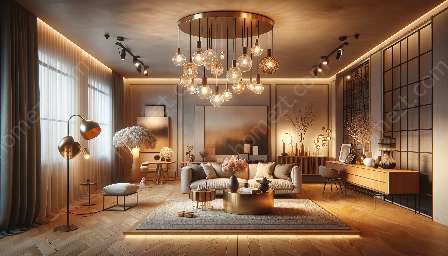Light bulbs are an essential part of any home, providing not just illumination, but also adding to the ambiance and decor of your living spaces. Understanding the different types of light bulbs, their specifications, and how they can be installed in various lighting fixtures is crucial for enhancing the aesthetics and functionality of your home. This guide will delve into the fascinating world of light bulbs, covering their specifications, compatibility with lighting fixtures, and how best to integrate them into your homemaking and interior decor projects.
Understanding Light Bulb Specifications
Before diving into the compatibility and installation aspects, it's important to comprehend the various specifications that are associated with light bulbs. Here are some key specifications you should consider:
- Bulb Type: Different types of light bulbs include incandescent, fluorescent, LED, and halogen. Understanding the differences between these types can help you make an informed decision when selecting a bulb for your home.
- Wattage: This indicates the amount of power consumed by the bulb. Understanding the wattage is important for ensuring that the bulb is suitable for the intended purpose and compatible with the fixture.
- Color Temperature: The color of the light emitted by a bulb is measured in Kelvin. Warmer colors (lower Kelvin) are more suitable for creating a cozy atmosphere, while cooler colors (higher Kelvin) are better for task lighting and workspaces.
- Base Type: Different bulbs have different base types, such as screw-in bases or pin bases. Understanding the base type is crucial for ensuring that the bulb can be properly installed in the fixture.
- Dimmability: Some bulbs are dimmable, while others are not. If you plan to use dimmer switches, it's important to select bulbs that are compatible with dimming capabilities.
Compatibility with Lighting Fixtures and Installation
Once you have a good grasp of light bulb specifications, it's time to consider how they can be integrated with various lighting fixtures and installed in your home. Different fixtures have specific requirements and compatibility considerations. Here are some factors to bear in mind:
- Fixture Type: Different types of fixtures, such as chandeliers, sconces, recessed lights, and track lighting, have different requirements for bulb compatibility and installation. Understanding which type of bulb is suitable for each fixture is crucial for achieving the desired lighting effect.
- Fixture Size and Design: The size and design of the fixture can impact the type of bulb that can be used. For example, some fixtures may have size restrictions or ventilation requirements that dictate which bulbs can be installed.
- Heat Dissipation: Certain fixtures, particularly recessed lights and enclosed fixtures, may require bulbs with good heat dissipation to prevent overheating and ensure longevity.
- Energy Efficiency: Consider using energy-efficient bulbs, such as LEDs, to minimize electricity consumption and reduce the need for frequent bulb replacements.
- Installation Techniques: Proper installation of light bulbs is essential for safety and functionality. It's important to follow the manufacturer's instructions and, if in doubt, seek professional assistance for installation.
Homemaking and Interior Decor Considerations
Lighting plays a significant role in homemaking and interior decor, contributing to the overall atmosphere and style of a space. Here are some key considerations for integrating light bulbs into your homemaking and interior decor endeavors:
- Task Lighting: Consider using light bulbs that offer the right color temperature and brightness for specific tasks, such as reading, cooking, or working from home.
- Ambient Lighting: Utilize light bulbs to create ambient lighting that sets the mood and enhances the aesthetics of your home. Consider the color temperature and dimming capabilities to achieve the desired ambiance.
- Decorative Lighting: Some light bulbs are designed to be visually appealing and can serve as decorative elements in fixtures or as standalone pieces. Explore decorative bulb options to add flair to your interior decor.
- Energy-efficient Choices: As part of sustainable homemaking practices, opt for energy-efficient bulbs that not only save on electricity costs but also contribute to a greener environment.
- Smart Lighting Integration: With the advancement of technology, consider integrating smart bulbs into your interior decor to have greater control over lighting settings and create customizable lighting scenes.
By understanding light bulb specifications, compatibility with lighting fixtures, and strategies for integrating them into homemaking and interior decor projects, you can elevate the lighting experience in your home and create inviting, functional, and visually appealing spaces. Whether you are renovating, redecorating, or embarking on new construction, the right light bulbs and installation techniques can make a significant difference in enhancing your living environment.


